-
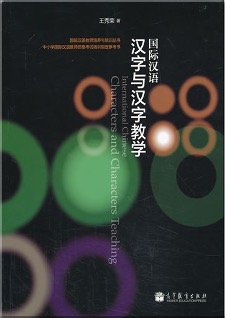 《国际汉语教师培养与培训丛书:国际汉语汉字与汉字教学》主要面向国内外从事国际汉语教学的教师,也适用于汉语国际教育及相关专业的学生,以及有志于从事中小学国际汉语教学的其他人员,可用作专业课教材、教师培训、个人自学等。《国际汉语教师培养与培训丛书:国际汉语汉字与汉字教学》立足于国际汉语教育实践,从具有前瞻性的国际化视角入手,在图书定位、构成、编写理念、框架体例等各个方面都进行了尝试和创新,以期实现“教学入门—教学实践—教学思考—教学创新”四步走的目标,最终提高国际汉语教师的教学素质和教学水平。 It is also suitable for students of Chinese international education and related majors, as well as other people who are interested in international Chinese teaching in primary and secondary schools. The book is based on the practice of international Chinese language education and is written from a forward-looking international perspective, with attempts and innovations made in various aspects such as book positioning, composition, writing concept and framework style. The aim of the book is to achieve the goal of "teaching introduction - teaching practice - teaching reflection - teaching innovation", and ultimately to improve the teaching quality and level of international Chinese language teachers.
《国际汉语教师培养与培训丛书:国际汉语汉字与汉字教学》主要面向国内外从事国际汉语教学的教师,也适用于汉语国际教育及相关专业的学生,以及有志于从事中小学国际汉语教学的其他人员,可用作专业课教材、教师培训、个人自学等。《国际汉语教师培养与培训丛书:国际汉语汉字与汉字教学》立足于国际汉语教育实践,从具有前瞻性的国际化视角入手,在图书定位、构成、编写理念、框架体例等各个方面都进行了尝试和创新,以期实现“教学入门—教学实践—教学思考—教学创新”四步走的目标,最终提高国际汉语教师的教学素质和教学水平。 It is also suitable for students of Chinese international education and related majors, as well as other people who are interested in international Chinese teaching in primary and secondary schools. The book is based on the practice of international Chinese language education and is written from a forward-looking international perspective, with attempts and innovations made in various aspects such as book positioning, composition, writing concept and framework style. The aim of the book is to achieve the goal of "teaching introduction - teaching practice - teaching reflection - teaching innovation", and ultimately to improve the teaching quality and level of international Chinese language teachers. -
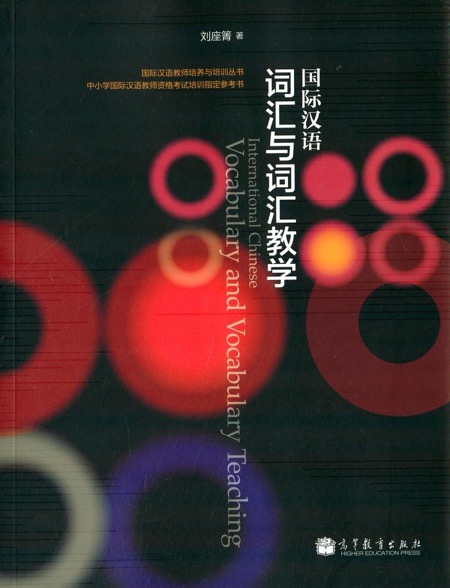
《国际汉语教师培养与培训丛书:国际汉语词汇与词汇教学》的特点是:
一、定位明确。本书面向广大一线国际汉语教师和有志于从事国际汉语教学工作的读者,也可做职业培训教材或自学教材之用。
二、内容实用。《国际汉语教师培养与培训丛书:国际汉语词汇与词汇教学》紧密联系课堂实践,对课堂上可能涉及的与词汇教学有关的问题做了比较全面的梳理和介绍,并提出了一些有针对性的教学方法和教学技巧等。
三、重在引导。《国际汉语教师培养与培训丛书:国际汉语词汇与词汇教学》各章均含有导读、读前思考、读后练习、读后思考等板块,在巩固所学知识的同时,鼓励读者自主地思考词汇教学的重点和难点。
The International Chinese Language Teacher Training and Development Series: International Chinese Vocabulary and Vocabulary Teaching is characterized by I. Clear positioning. This book is aimed at front-line international Chinese teachers and readers who are interested in teaching Chinese as a foreign language, and can also be used as a vocational training textbook or a self-study textbook. 2. Practical content. The book is closely related to classroom practice and provides a comprehensive introduction to the issues related to vocabulary teaching in the classroom, as well as some targeted teaching methods and techniques. 3. Focus on guidance. All chapters in the International Chinese Language Teacher Training and Development Series: International Chinese Vocabulary and Vocabulary Teaching contain an introduction, pre-reading reflection, post-reading exercise and post-reading reflection, which encourage readers to think independently about the key points and difficulties of vocabulary teaching while consolidating what they have learnt.
-
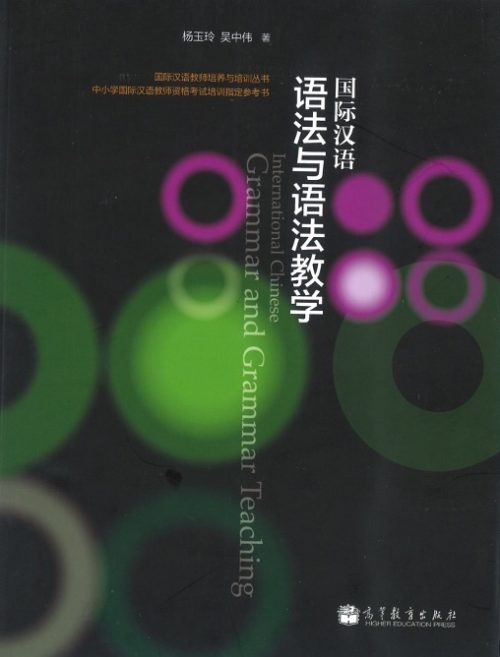 《国际汉语教师培养与培训丛书:国际汉语语法与语法教学》力求做到知识和能力兼顾,理论和实践结合,既能满足部分教师补充语法知识的需要,也能满足更多教师提高教学技能的需求。希望看完这本书的一些朋友,在面对学生提出的“为什么”的时候,不再用“没有为什么,这是我们中国人的习惯”来搪塞学生;而另一些朋友则不再苦于自己“满腹语法经纶”却不知如何传授给学生。 The book aims to combine knowledge and ability, theory and practice, to meet the needs of some teachers to supplement their knowledge of grammar, and to meet the needs of more teachers to improve their teaching skills. I hope that some of you who have read this book will no longer be able to put off your students by saying "there is no why, it is our Chinese habit" when they ask "why", while others will no longer suffer from their own Others no longer struggle with the fact that they are "full of grammar knowledge" but do not know how to pass it on to their students.
《国际汉语教师培养与培训丛书:国际汉语语法与语法教学》力求做到知识和能力兼顾,理论和实践结合,既能满足部分教师补充语法知识的需要,也能满足更多教师提高教学技能的需求。希望看完这本书的一些朋友,在面对学生提出的“为什么”的时候,不再用“没有为什么,这是我们中国人的习惯”来搪塞学生;而另一些朋友则不再苦于自己“满腹语法经纶”却不知如何传授给学生。 The book aims to combine knowledge and ability, theory and practice, to meet the needs of some teachers to supplement their knowledge of grammar, and to meet the needs of more teachers to improve their teaching skills. I hope that some of you who have read this book will no longer be able to put off your students by saying "there is no why, it is our Chinese habit" when they ask "why", while others will no longer suffer from their own Others no longer struggle with the fact that they are "full of grammar knowledge" but do not know how to pass it on to their students. -
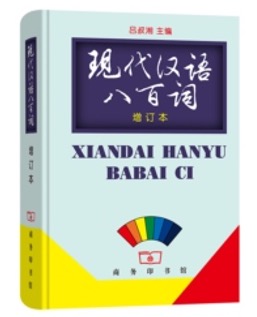 《现代汉语八百词》是一部虚词(兼及少量实词)用法词典。全书共收录819个词(据书后《索引》按词头统计)。所谓“八百”的说法,不是一种确数表达,属于取整数的一种便捷称谓。 《现代汉语八百词》全书除“前言”和“笔画索引”外,共分四个部分,分别是“凡例”“现代汉语语法要点”“正文”和“附录”。增订本在初版的“笔画索引”之外,另加了“音序索引”,使读者又多了一种查阅方式。 The 800 Words in Modern Chinese is a dictionary of dummy words (and a few real words) in use. It contains a total of 819 words (according to the Index at the back of the book, by word head). The expression "eight hundred" is not a definitive expression, but a convenient way of referring to whole numbers. In addition to the Preface and the Stroke Index, the book is divided into four parts, namely, "General Examples", "Modern Chinese Grammar The book is divided into four parts, namely, "General Examples", "Modern Chinese Grammar", "Main Points", "Text" and "Appendix". In addition to the Stroke Index in the first edition, the updated edition also includes a Phonetic Index, which provides readers with an additional way to consult the text.
《现代汉语八百词》是一部虚词(兼及少量实词)用法词典。全书共收录819个词(据书后《索引》按词头统计)。所谓“八百”的说法,不是一种确数表达,属于取整数的一种便捷称谓。 《现代汉语八百词》全书除“前言”和“笔画索引”外,共分四个部分,分别是“凡例”“现代汉语语法要点”“正文”和“附录”。增订本在初版的“笔画索引”之外,另加了“音序索引”,使读者又多了一种查阅方式。 The 800 Words in Modern Chinese is a dictionary of dummy words (and a few real words) in use. It contains a total of 819 words (according to the Index at the back of the book, by word head). The expression "eight hundred" is not a definitive expression, but a convenient way of referring to whole numbers. In addition to the Preface and the Stroke Index, the book is divided into four parts, namely, "General Examples", "Modern Chinese Grammar The book is divided into four parts, namely, "General Examples", "Modern Chinese Grammar", "Main Points", "Text" and "Appendix". In addition to the Stroke Index in the first edition, the updated edition also includes a Phonetic Index, which provides readers with an additional way to consult the text. -
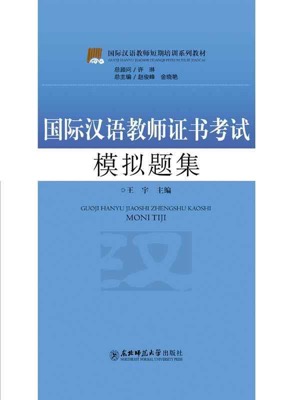 本测试题集为“国际汉语教师短期培训系列教材’’中的一本,主要有以下几个特点: 1.考点和题型参考《国际汉语教师标准》(2012版)和《国际汉语教师证书考试大纲》(以下称“大纲”)。按照《国际汉语教师标准》(2012版)的规定,国际汉语教师的知识体系应该分为五个模块,本测试题集对试题所属模块进行了标注,便于查找和学习。题型主要是客观题,并以案例带题的方式进行。 2.增加了案例分析主观题。考虑到客观题考查角度的单一,我们以模块为单位,每套题都增加了五个案例分析,帮助学习者全面了解汉语教学的各个方面,同时便于教师利用这些内容进行培训。 This test collection is one of the "Short-term Training Materials for International Chinese Language Teachers'', and has the following main features: 1. The test points and question types refer to the International Standard for Chinese Language Teachers (2012 Edition) and the International Chinese Language Teacher Certificate Examination Syllabus (hereinafter referred to as "Syllabus"). According to the International Standard for Chinese Language Teachers (2012 Edition), the knowledge system of international Chinese language teachers should be divided into five modules, and this test set has marked the modules to which the questions belong, so that they are easy to find and study. The question types are mainly objective questions and are presented in the form of case with questions. 2. Case study subjective questions have been added. Considering the single perspective of the objective questions, we have added five case studies to each set of questions on a module basis to help learners gain a comprehensive understanding of various aspects of Chinese language teaching, and to facilitate teachers' training using the content.
本测试题集为“国际汉语教师短期培训系列教材’’中的一本,主要有以下几个特点: 1.考点和题型参考《国际汉语教师标准》(2012版)和《国际汉语教师证书考试大纲》(以下称“大纲”)。按照《国际汉语教师标准》(2012版)的规定,国际汉语教师的知识体系应该分为五个模块,本测试题集对试题所属模块进行了标注,便于查找和学习。题型主要是客观题,并以案例带题的方式进行。 2.增加了案例分析主观题。考虑到客观题考查角度的单一,我们以模块为单位,每套题都增加了五个案例分析,帮助学习者全面了解汉语教学的各个方面,同时便于教师利用这些内容进行培训。 This test collection is one of the "Short-term Training Materials for International Chinese Language Teachers'', and has the following main features: 1. The test points and question types refer to the International Standard for Chinese Language Teachers (2012 Edition) and the International Chinese Language Teacher Certificate Examination Syllabus (hereinafter referred to as "Syllabus"). According to the International Standard for Chinese Language Teachers (2012 Edition), the knowledge system of international Chinese language teachers should be divided into five modules, and this test set has marked the modules to which the questions belong, so that they are easy to find and study. The question types are mainly objective questions and are presented in the form of case with questions. 2. Case study subjective questions have been added. Considering the single perspective of the objective questions, we have added five case studies to each set of questions on a module basis to help learners gain a comprehensive understanding of various aspects of Chinese language teaching, and to facilitate teachers' training using the content. -
 新中小学生汉语考试(YCT)是一项国际汉语能力标准化考试,考查汉语非第一语言的中小学生日常生活和学习中运用汉语的能力。新YCT分笔试和口试两部分。笔试包括YCT(一级)、YCT(二级)、YCT(三级)、YCT(四级);口试包括YCT(初级)和YCT(中级)。 YCT(一级)考查考生的日常汉语应用能力。通过YCT(一级)的考生可以理解并使用最常用的汉语词语和句子,具备进一学习汉语的能力。 The Youth Chinese Test (YCT) is an international standardised Chinese language proficiency test that tests the ability of primary and secondary school students whose Chinese is not their first language to use Chinese in their daily lives and studies. The new YCT has two parts: a written test and an oral test. The written test includes YCT (Level 1), YCT (Level 2), YCT (Level 3) and YCT (Level 4); the oral test includes YCT (Elementary) and YCT (Intermediate). YCT (Level 1) tests candidates' ability to use Chinese in everyday life. Candidates who pass YCT (Level 1) can understand and use the most commonly used Chinese words and sentences and have the ability to learn Chinese further.
新中小学生汉语考试(YCT)是一项国际汉语能力标准化考试,考查汉语非第一语言的中小学生日常生活和学习中运用汉语的能力。新YCT分笔试和口试两部分。笔试包括YCT(一级)、YCT(二级)、YCT(三级)、YCT(四级);口试包括YCT(初级)和YCT(中级)。 YCT(一级)考查考生的日常汉语应用能力。通过YCT(一级)的考生可以理解并使用最常用的汉语词语和句子,具备进一学习汉语的能力。 The Youth Chinese Test (YCT) is an international standardised Chinese language proficiency test that tests the ability of primary and secondary school students whose Chinese is not their first language to use Chinese in their daily lives and studies. The new YCT has two parts: a written test and an oral test. The written test includes YCT (Level 1), YCT (Level 2), YCT (Level 3) and YCT (Level 4); the oral test includes YCT (Elementary) and YCT (Intermediate). YCT (Level 1) tests candidates' ability to use Chinese in everyday life. Candidates who pass YCT (Level 1) can understand and use the most commonly used Chinese words and sentences and have the ability to learn Chinese further. -
 中小学生汉语考试(YCT)自2010年实施以来,更加关注汉语非第一语言的学习者综合能力的培养,多元智能发展的培养。《YCT考试大纲与应考指南》是基于《YCT考试大纲(2009版)》的一次修订。本次修订继续遵循“考教结合”的理念,根据主题式教学和任务型教学的理论及方法,以交际话题和语言任务为引领,重点描述学生在每一级别的词语、语言点限定内“能做(can do)”什么,建议在实际教学中,整体培养学习者的交际能力和语言综合运用能力。 Since its implementation in 2010, the Youth Chinese Test (YCT) has paid more attention to the cultivation of comprehensive abilities and the development of multiple intelligences for learners whose Chinese is not their first language. The YCT Syllabus and Examination Guide is a revision of the YCT Syllabus (2009 Edition). The revision continues to follow the concept of 'teaching and learning together', and is based on the theories and methods of topic-based teaching and task-based teaching, using communicative topics and language tasks as a guide. It is recommended that in practice, learners develop their communicative competence and their ability to use the language as a whole.
中小学生汉语考试(YCT)自2010年实施以来,更加关注汉语非第一语言的学习者综合能力的培养,多元智能发展的培养。《YCT考试大纲与应考指南》是基于《YCT考试大纲(2009版)》的一次修订。本次修订继续遵循“考教结合”的理念,根据主题式教学和任务型教学的理论及方法,以交际话题和语言任务为引领,重点描述学生在每一级别的词语、语言点限定内“能做(can do)”什么,建议在实际教学中,整体培养学习者的交际能力和语言综合运用能力。 Since its implementation in 2010, the Youth Chinese Test (YCT) has paid more attention to the cultivation of comprehensive abilities and the development of multiple intelligences for learners whose Chinese is not their first language. The YCT Syllabus and Examination Guide is a revision of the YCT Syllabus (2009 Edition). The revision continues to follow the concept of 'teaching and learning together', and is based on the theories and methods of topic-based teaching and task-based teaching, using communicative topics and language tasks as a guide. It is recommended that in practice, learners develop their communicative competence and their ability to use the language as a whole. -
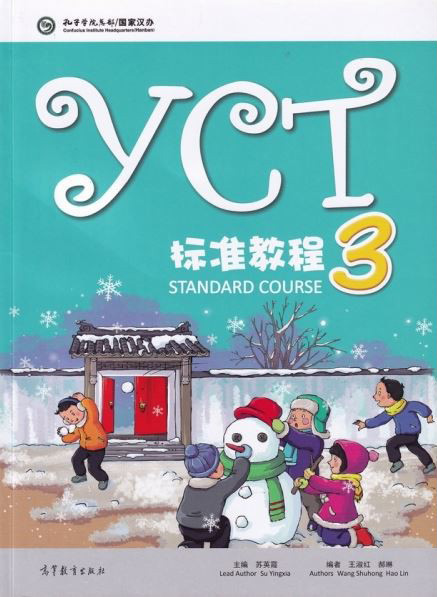 中小学生汉语考试(YCT)是一项国际汉语能力标准化考试,考查汉语非第1语言的中小学生在日常生活和学习中运用汉语的能力。在真题分析的基础上,本着“考教结合”的理念《YCT标准教程(3)》应运而生。 The Youth Chinese Test (YCT) is an international standardised Chinese language proficiency test that tests the ability of primary and secondary school students whose Chinese is not their first language to use Chinese in their daily lives and studies. The YCT Standard Course (3) textbook has been developed based on the analysis of the exam questions and the concept of "teaching and learning together".
中小学生汉语考试(YCT)是一项国际汉语能力标准化考试,考查汉语非第1语言的中小学生在日常生活和学习中运用汉语的能力。在真题分析的基础上,本着“考教结合”的理念《YCT标准教程(3)》应运而生。 The Youth Chinese Test (YCT) is an international standardised Chinese language proficiency test that tests the ability of primary and secondary school students whose Chinese is not their first language to use Chinese in their daily lives and studies. The YCT Standard Course (3) textbook has been developed based on the analysis of the exam questions and the concept of "teaching and learning together". -
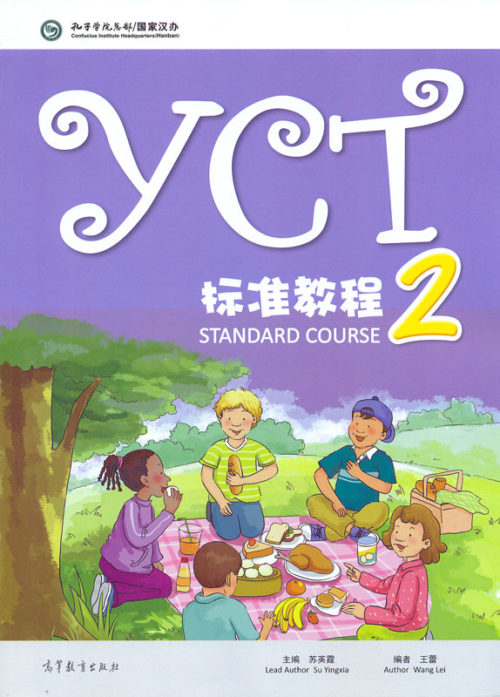 中小学生汉语考试(YCT)是一项国际汉语能力标准化考试,考查汉语非第1语言的中小学生在日常生活和学习中运用汉语的能力。在真题分析的基础上,本着“考教结合”的理念《YCT标准教程(2)》应运而生。 The Youth Chinese Test (YCT) is an international standardised Chinese language proficiency test that tests the ability of primary and secondary school students whose Chinese is not their first language to use Chinese in their daily lives and studies. The YCT Standard Course (2) textbook has been developed based on the analysis of the exam questions and the concept of "teaching and learning together".
中小学生汉语考试(YCT)是一项国际汉语能力标准化考试,考查汉语非第1语言的中小学生在日常生活和学习中运用汉语的能力。在真题分析的基础上,本着“考教结合”的理念《YCT标准教程(2)》应运而生。 The Youth Chinese Test (YCT) is an international standardised Chinese language proficiency test that tests the ability of primary and secondary school students whose Chinese is not their first language to use Chinese in their daily lives and studies. The YCT Standard Course (2) textbook has been developed based on the analysis of the exam questions and the concept of "teaching and learning together". -
 汉语水平考试(HSK)是教育部中外语言交流合作中心主办,汉考国际研发、实施的一项国际汉语能力标准化考试,重点考查汉语非第一语言的考生在生活、学习和工作中运用汉语进行交际的能力。 为了满足全球HSK考生的强烈需求,教育部中外语言交流合作中心组织出版《汉语水平考试真题集》(2018版)系列。该系列图书共6册,分别对应HSK一至六级。 HSK is an international standardized exam sponsored by Center for Language Education and Cooperation and developed and implemented by the Chinese Testing International Co., Ltd. (CTI). It focuses on examining the ability of Chinese non-first language candidates to use Chinese in life, study and work. In order to meet the strong demand of global HSK candidates, Hanban/Confucius Institute Headquarters has published the series of Official Examination Papers of HSK (2018 Edition). The series consists of 6 volumes, corresponding to HSK Levels 1 to 6.
汉语水平考试(HSK)是教育部中外语言交流合作中心主办,汉考国际研发、实施的一项国际汉语能力标准化考试,重点考查汉语非第一语言的考生在生活、学习和工作中运用汉语进行交际的能力。 为了满足全球HSK考生的强烈需求,教育部中外语言交流合作中心组织出版《汉语水平考试真题集》(2018版)系列。该系列图书共6册,分别对应HSK一至六级。 HSK is an international standardized exam sponsored by Center for Language Education and Cooperation and developed and implemented by the Chinese Testing International Co., Ltd. (CTI). It focuses on examining the ability of Chinese non-first language candidates to use Chinese in life, study and work. In order to meet the strong demand of global HSK candidates, Hanban/Confucius Institute Headquarters has published the series of Official Examination Papers of HSK (2018 Edition). The series consists of 6 volumes, corresponding to HSK Levels 1 to 6. -
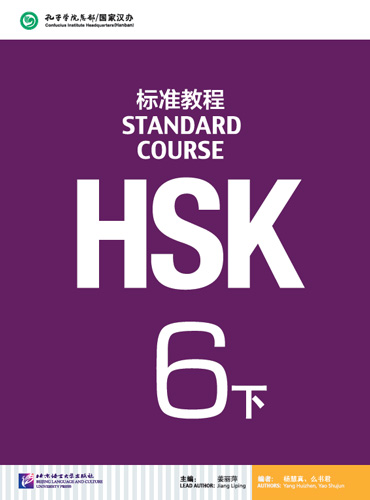 《HSK标准教程》经国家汉办授权,由北京语言大学出版社联合汉考国际(CTI)共同研发,将HSK真题作为基本素材,以自然幽默的风格、亲切熟悉的话题、科学严谨的课程设计,实现了与HSK考试内容、形式及等级水平的全方位对接,是一套充分体现“考教结合、以考促学、以考促教”理念的新型汉语教材。既适用于各国孔子学院,也适用于其他汉语教学机构和个人自学。 本书为教程6(下),共设5单元、20课,覆盖HSK(六级)考试一半的生词量(约1300个),包含60个语言点和20组易混淆词语的详解。学完本书学生可达到“轻松地理解听到或读到的汉语信息,以口头或书面的形式用汉语流利地表达自己见解”的目标。
《HSK标准教程》经国家汉办授权,由北京语言大学出版社联合汉考国际(CTI)共同研发,将HSK真题作为基本素材,以自然幽默的风格、亲切熟悉的话题、科学严谨的课程设计,实现了与HSK考试内容、形式及等级水平的全方位对接,是一套充分体现“考教结合、以考促学、以考促教”理念的新型汉语教材。既适用于各国孔子学院,也适用于其他汉语教学机构和个人自学。 本书为教程6(下),共设5单元、20课,覆盖HSK(六级)考试一半的生词量(约1300个),包含60个语言点和20组易混淆词语的详解。学完本书学生可达到“轻松地理解听到或读到的汉语信息,以口头或书面的形式用汉语流利地表达自己见解”的目标。Authorized by Hanban, HSK Standard Course is developed under the joint efforts of Beijing Language and Culture University Press and Chinese Testing International (CTI). With HSK test papers as its primary source, HSK Standard Course is characterized by a humorous style, familiar topics and a scientific course design. Matching the HSK test in all aspects, from the content, form to the levels, it is a series of new-type course books embodying the idea of “combining testing and teaching, and promoting learning and teaching by testing”. It is suitable for the Confucius Institutes in different countries as well as other Chinese teaching institutions and self-taught learners.
This is Textbook 6B, which includes 20 lessons in 5 units, covering about 1300 new words (half of the Level 6 vocabulary) and the detailed explanations of 60 language points and 20 groups of confusable phrases. Upon finishing this book, students will be able to easily understand the Chinese information they hear or read and fluently express their ideas in Chinese either orally or in written form.
-
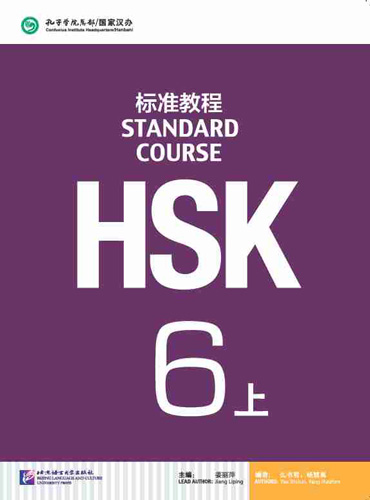 《HSK标准教程》经国家汉办授权,由北京语言大学出版社联合汉考国际(CTI)共同研发,将HSK真题作为基本素材,以自然幽默的风格、亲切熟悉的话题、科学严谨的课程设计,实现了与HSK考试内容、形式及等级水平的全方位对接,是一套充分体现“考教结合、以考促学、以考促教”理念的新型汉语教材。既适用于各国孔子学院,也适用于其他汉语教学机构和个人自学。 本书为教程6(上),共设5单元、20课,覆盖HSK(六级)考试一半的生词量(约1300个),包含60个语言点和20组易混淆词语的详解。学完本书学生可达到“轻松地理解听到或读到的汉语信息,以口头或书面的形式用汉语流利地表达自己见解”的目标。
《HSK标准教程》经国家汉办授权,由北京语言大学出版社联合汉考国际(CTI)共同研发,将HSK真题作为基本素材,以自然幽默的风格、亲切熟悉的话题、科学严谨的课程设计,实现了与HSK考试内容、形式及等级水平的全方位对接,是一套充分体现“考教结合、以考促学、以考促教”理念的新型汉语教材。既适用于各国孔子学院,也适用于其他汉语教学机构和个人自学。 本书为教程6(上),共设5单元、20课,覆盖HSK(六级)考试一半的生词量(约1300个),包含60个语言点和20组易混淆词语的详解。学完本书学生可达到“轻松地理解听到或读到的汉语信息,以口头或书面的形式用汉语流利地表达自己见解”的目标。Authorized by Hanban, HSK Standard Course is developed under the joint efforts of Beijing Language and Culture University Press and Chinese Testing International (CTI). With HSK test papers as its primary source, HSK Standard Course is characterized by a humorous style, familiar topics and a scientific course design. Matching the HSK test in all aspects, from the content, form to the levels, it is a series of new-type course books embodying the idea of "combining testing and teaching, and promoting learning and teaching by testing". It is suitable for the Confucius Institutes in different countries as well as other Chinese teaching institutions and self-taught learners.
This is Textbook 6A, which includes 20 lessons in 5 units, covering about 1300 words (half of the Level 6 vocabulary) and the detailed explanations of 60 language points and 20 groups of confusable phrases. Upon finishing this book, students will be able to effortlessly understand the Chinese information they heard or read and fluently express their ideas in spoken or oral form.